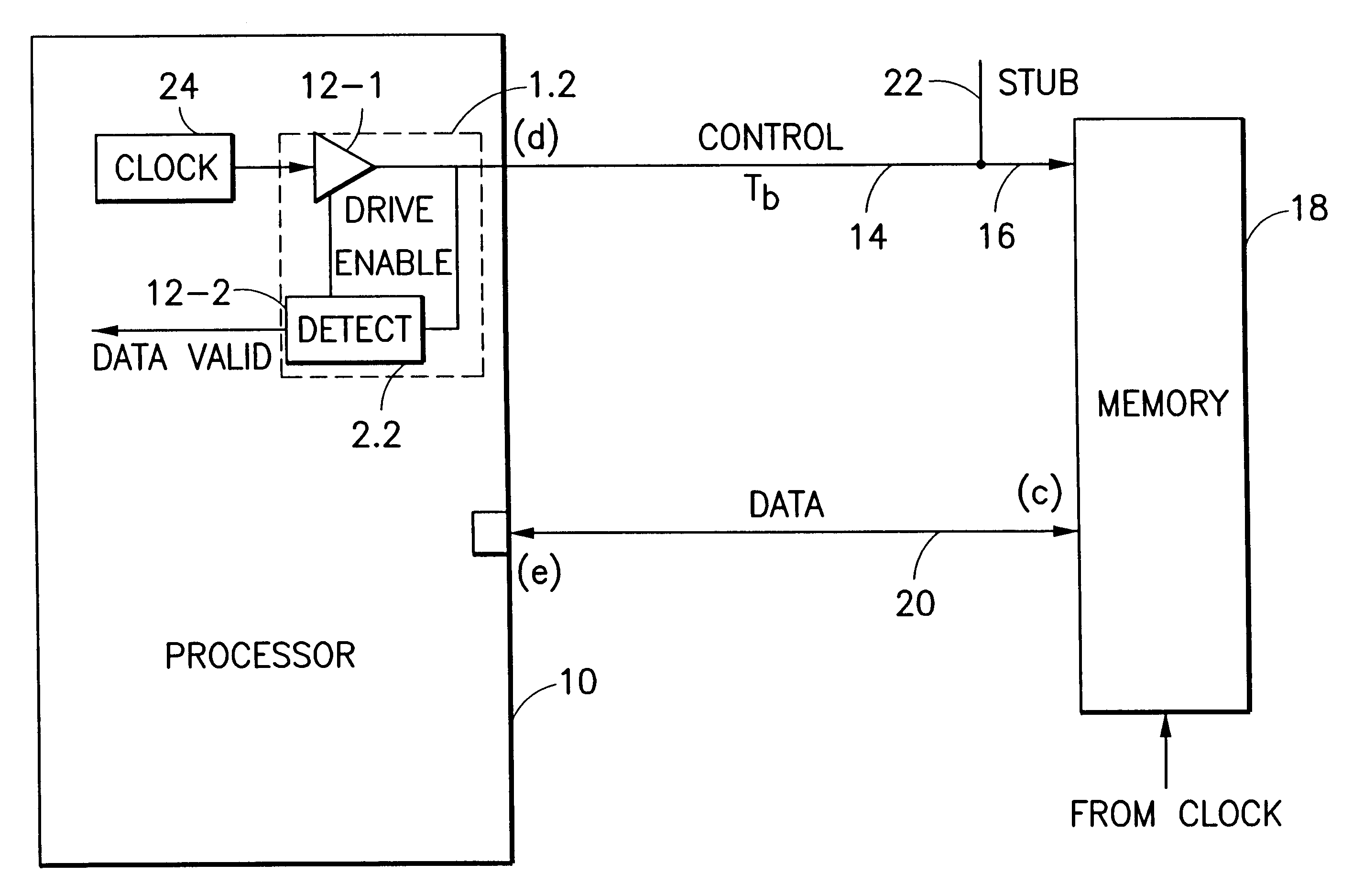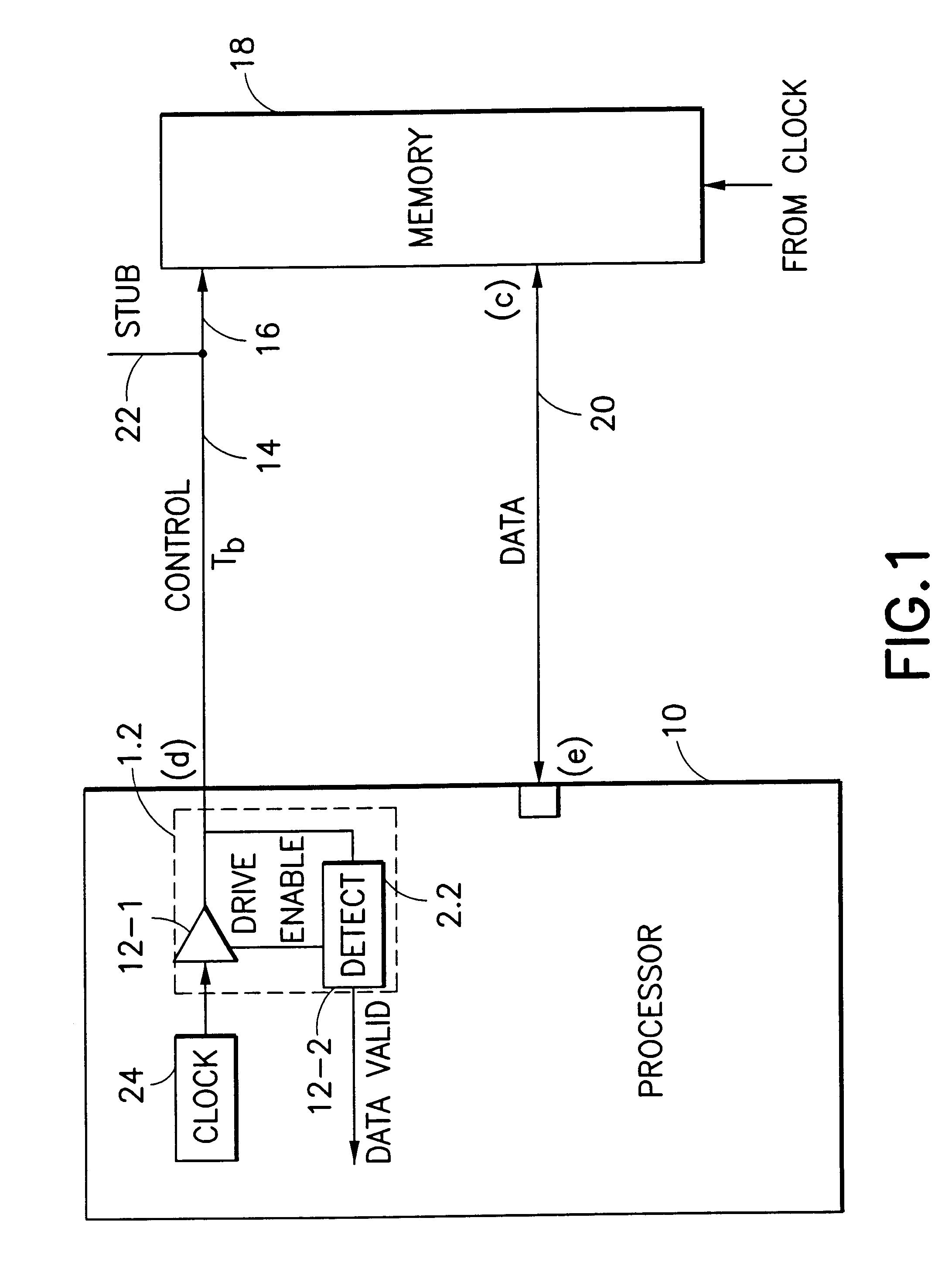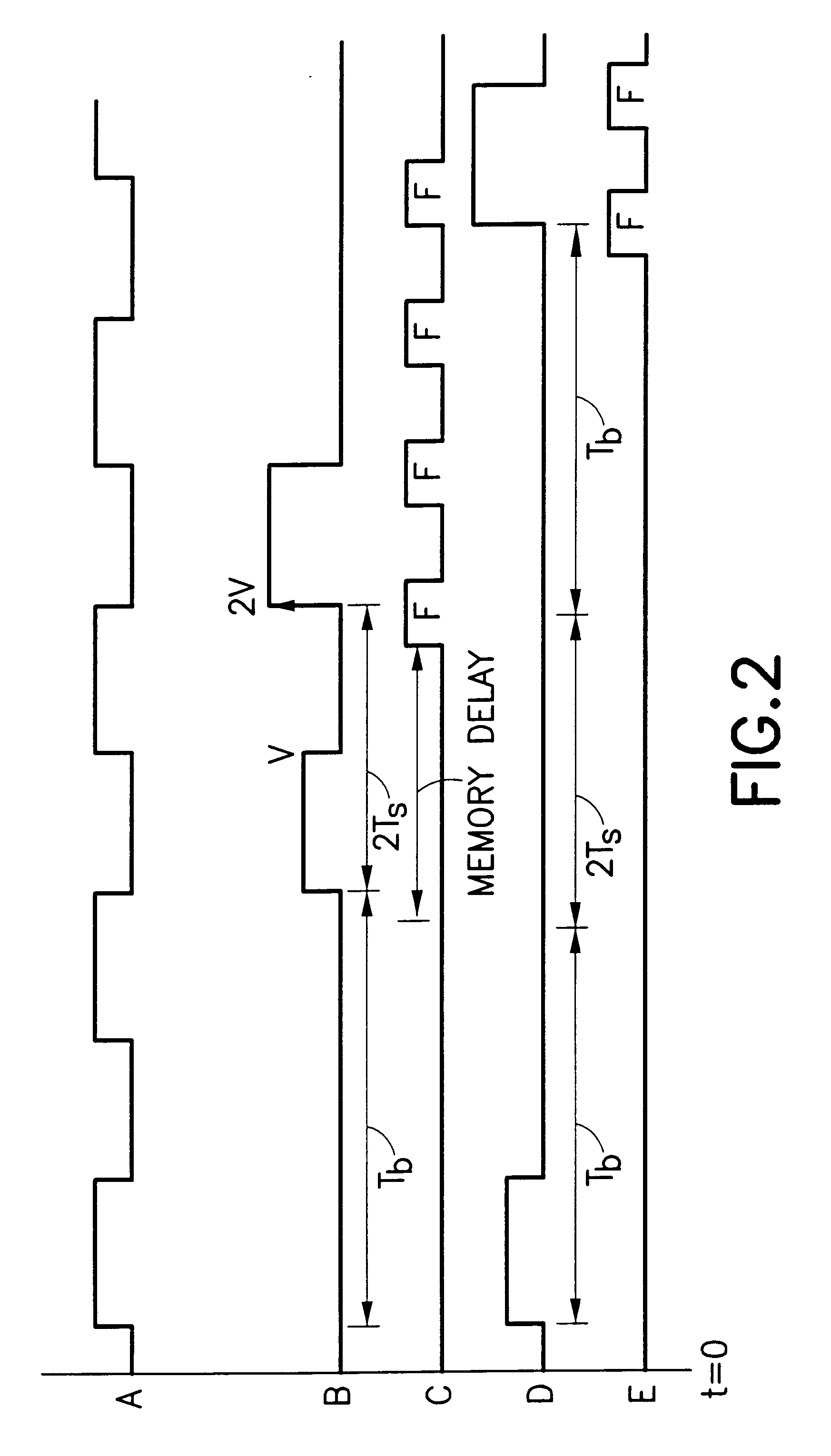High frequency valid data strobe
a data strobe and high frequency technology, applied in the field of high speed memory, can solve the problems of insufficient phase locked loops and digital locked loops at such high speed operation, and the synchronization problems of high speed sram and dram memories between control signals and data signals
- Summary
- Abstract
- Description
- Claims
- Application Information
AI Technical Summary
Problems solved by technology
Method used
Image
Examples
Embodiment Construction
Very high speed operation of memories such as SRAMs and DRAMs results in synchronization problems occurring between control signals and data signals. Phase locked loops or digital locked loops do not perform adequately at such high speed operation.
Transmission lines for memories have well controlled delays per unit lengths, and good high frequency characteristics. A delay line may be used to accurately set the time delay between control pulses and data pulses such that a data strobe occurs in synchronism with data arrival at the processor of the memory. For example, the strobe transition can be set to occur at the midpoint of the data valid window.
FIG. 1 shows a processor 10 with a memory send / received control circuit 12 including a bus drive circuit 12-1 connected to a processor clock 24 and a detector circuit 12-2 connected via control bus line 14 to the control input 16 of the memory 18. Detector circuit 12-2 is enabled by a signal from bus drive circuit 12-1. A data input line, ...
PUM
 Login to View More
Login to View More Abstract
Description
Claims
Application Information
 Login to View More
Login to View More - R&D
- Intellectual Property
- Life Sciences
- Materials
- Tech Scout
- Unparalleled Data Quality
- Higher Quality Content
- 60% Fewer Hallucinations
Browse by: Latest US Patents, China's latest patents, Technical Efficacy Thesaurus, Application Domain, Technology Topic, Popular Technical Reports.
© 2025 PatSnap. All rights reserved.Legal|Privacy policy|Modern Slavery Act Transparency Statement|Sitemap|About US| Contact US: help@patsnap.com



